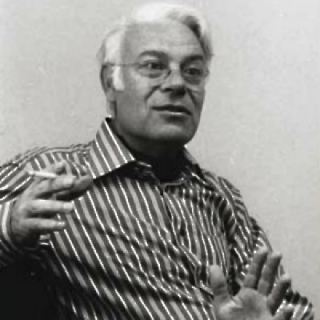
Grahame Edwin King was a master Australian printmaker, who has been called the "patron saint of contemporary Australian printmaking". He was responsible for the revival of print making in Australia in the 1960s. He helped set up the Print Council of Australia, of which he was the first Honorary Secretary and was later President. He taught printmaking at The Royal Melbourne Institute of Technology (RMIT) from 1966 to 1988. In 1991, he was awarded an Order of Australia for his services to education. As well as teaching, King produced his own art work, concentrating on lithographs and monotypes. He was also a skilled photographer and used his photography both in his teaching and in his practice.
Franz Moishe Kempf was an Australian artist who worked in Australia and Europe. He was a lecturer in printmaking at the University of Adelaide.
Sylvia Convey is a Latvian Australian self-taught artist known for her paintings, quilts and dolls.

Jessie Constance Alicia Traill was an Australian printmaker. Trained by Frederick McCubbin at the National Gallery of Victoria Art School, and by painter and printmaker Frank Brangwyn in London, Traill worked in England and France in the period immediately preceding World War I. During the war she served in hospitals with the Voluntary Aid Detachment.
Diane Mantzaris is an Australian artist known for her pioneering application of digital imaging to printmaking and for her unconventional approach to image making, which is often both personal and political in content. Mantzaris pioneered the use of computers as a printmaking and art-making tool in the early to mid-1980s, exhibiting widely, nationally and throughout Asia in touring exhibitions, to considerable acclaim. Her practice now crosses into several fields associated with the visual arts, printmaking, drawing, photography, sculpture, performance and public art. She is represented in most state and public collections throughout Australia and significant private collections throughout Asia and Europe.

Finlay Press is the name of an independent private press founded by Ingeborg Hansen and Phil Day (artist). It began production in Goulburn, NSW, Australia in 1997. In 2001 the press moved to Braidwood, New South Wales, Australia, where it printed its final publication in 2009.
Rona Green is an Australian visual artist.

Robin Wallace-Crabbe has been actively involved in the Australian arts scene since the 1960s as a curator of exhibitions, literary reviewer, cartoonist, illustrator, book designer, publisher and a commenter on art. He is best known as a writer and visual artist where he has moved between the two mediums for over fifty years, having had thirteen novels published, five under his own name, and eight under the pseudonym – Robert Wallace, and since the early sixties he has had numerous solo exhibitions in Australian capital cities. Including a Survey Exhibition held at the Australian National University in 1980. And another Survey Exhibition touring Australian Regional galleries across Australia between 1990 and 1991. Sasha Grishin describes him as ‘ … a brilliant draughtsman and colourist, his [pictures] experiment with ideas of levels of perception. The observer and the observed share a common, ambiguous space which opens up an intellectual dimension to the [pictures], where the witty and provocative gestures suggest further levels of interpretation.’
Geoffrey Ricardo is an Australian contemporary visual artist whose work focuses on his sculpture and printmaking practice.

Jörg Schmeisser was a noted and award-winning printmaker.
Tony Ameneiro is an Australian contemporary visual artist whose work focuses around his drawing and printmaking practice.

Udo Sellbach (1927–2006) was a German-Australian visual artist and educator whose work focused primarily around his printmaking practice.
Andrew John Sibley was an English-born Australian artist. Sibley has been the subject of three books and is commonly listed in histories and encyclopedias of Australian art as a significant figurative painter of the mid and late 20th century.
The australian Girls Own Gallery (aGOG) was a commercial art gallery that operated in Leichhardt Street, Kingston in Canberra from 1989 to 1998. The gallery was owned and operated by former National Gallery of Australia curator Helen Maxwell, and exhibited the work of women artists almost exclusively.
Phil Day is an Australian artist. He is formally recognised as a Notable Graduate from the Graphic Investigation Workshop, Australian National University (ANU), alongside Alex Hamilton, Paul McDermott, Danie Mellor and Paul Uhlmann.
Yvonne Boag is an Australian painter and printmaker whose work reflects the many places where she has lived and worked.
Tanya Myshkin is an Australian printmaker, born in Adelaide, South Australia and based in Canberra. She is a printmaker known for her drawing, wood engraving and etching. Much of her imagery is centred around the natural world.
Alexander "Sasha" Dmitrievich Grishin is an Australian art historian, art critic and curator based in Victoria and Canberra. He is known as an art critic, and for establishing the academic discipline of art history at the Australian National University (ANU).
Marie Hagerty is an Australian artist, painter, sculptor and teacher.
Angela Cavalieri is an Australian printmaker.






